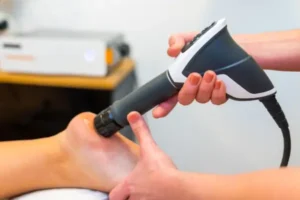Have you ever experienced shortness of breath? Felt like you were unable to take a deep full breath?
This may actually be a problem due to poor posture, let me explain …
Review of Poor Posture
When we carry ourselves with poor posture we are submitting to gravity. It may feel ‘easier’ but we are not doing justice for our body. What happens is our muscles are now at a disadvantage for optimal functioning. Muscles contract best within a certain length so when joints aren’t aligned correctly we tend to put muscles in a disadvantageous ‘shortened’ or ‘lengthened’ state which makes it difficult for them to provide stability.
Particularly when looking at antigravity musculature, the muscles we use daily to stand and walk. The muscles then develop dysfunction, the nervous system becomes inhibited which leads to postural muscles turning off then causing musculoskeletal micro damage.
Biomechanics of Breathing
To take a breath there are a few actions at work.
- Our diaphragm contracts and depresses causing our lungs to inflate increasing size and causing air inhalation. This is all a mechanism of creating a slight negative pressure in the chest cavity via the diaphragm.
- At the same time our rib cage is elevating and expanding allowing for the lungs to expand. This movement is created through intercostals muscles in between our ribs and accessory breathing muscles in our neck. This action also aids in creating a small negative pressure allowing air to flow into the lungs.
Poor Posture means Poor Breathing
Now what I would like you to do is stand making yourself tall, now take a deep full breath in. Next I want you to sit and slouch forward and try and do the same. Feel a difference?
This is because when we ‘slouch’ or practice poor posture we actually limit our functional breathing capacity. Our rib cage is unable to elevate and expand and we have shortened the space in our thorax/abdomen which inhibits our diaphragm to contract fully and depress. This potentially reduces our functional breathing capacity by 30% if not more which means our body is not receiving the oxygen it requires to function optimally.
When this becomes habitual we develop neuromuscular inhibition in our breathing muscles which requires compensatory methods. Typically our body starts to rely on our accessory breathing muscles in our neck, which as stated ‘are only accessory breathing muscles’. An increase in workload required by these muscles ends up causing neck conditions and headaches due to the fact that they are not meant to take up that much workload.
On a final note, if your performance is struggling during your favourite activity you may want to have your posture assessed. If we are unable to breath well sitting or standing, how can we expect to breath well during movement.
Get in touch with us here to book your next appointment.
Disclaimer: This post is for general information only and is not a substitute for personalised medical advice. If you’re experiencing recurring or concerning symptoms, especially neurological ones and or severe uncharacteristic headaches, please speak to your GP or seek urgent medical care. Social media isn’t a diagnosis tool, even when it’s run by a qualified health professional.





